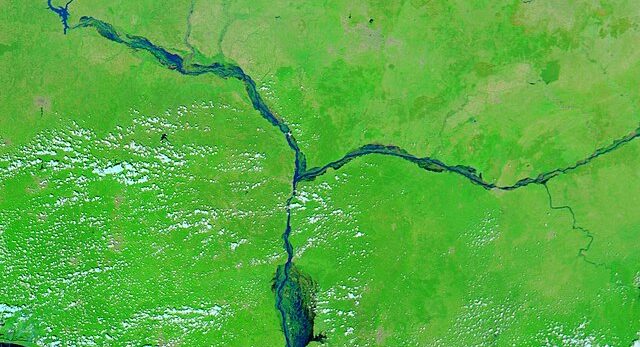19 states in northern Nigeria have partnered with the Food and Agricultural organization (FAO) to recover millions of hectares of degraded farmland. This at a time when agriculture is helping Nigeria’s economy grow by 3%.
The Kano State Agro-Climatic Resilience in Semi-Arid Landscapes (ACReSAL) stated April 29, 2024 that it would restore a million hectares in the state.
According to Dr. Dahir Muhammad Hashim, the Project Coordinator at ACReSAL in Kano, the initial phase has already began on 10,000 hectares.
Upon restoration, these idle farmlands will soon be “handed back to farmers” to enhance local food production.
Northern Nigeria is prone to desertification due to many economic activities such as grazing, faulty irrigation and fuel gathering.
For this reason, ACReSAL also commits to ensure that farmers plant trees in the lands that the state restores.
Doing the restoration work will be the fast and efficient Delphino machine, which works better than tractors in land preparation.
FAO is taking the initiative to train operators of this specialized equipment to ensure efficiency and thorough preparation.
In the wake of the Delphino machines will be farmers who will receive free seeds, fertilizers and inputs.
Degraded Farmland Affects 62 Million Nigerians
This project comes at a time when 62 million people in northern Nigeria are in the direct path of desertification.
Around 580,841 km2 out of the country’s total land mass of 927,892 km2 is vulnerable to desertification.
By 2018, a fifth of Nigeria’s land was highly vulnerable to degradation and most of it lay across 15 states.
Cocoa Agroforestry
Farming of land-intensive crops such as cocoa in the south is also leading to forest encroachment.
Luckily, Nigeria is one of the signatories among 32 nations in Africa of the African Landscape Restoration Initiative (AFR100). The initiative aims to regrow 128 million hectares in degraded agricultural areas by 2030.
One of the successes of the program so far is the growing footprint of the cocoa agroforestry method to restore forests. In this model, cocoa and other trees provide a cultivated forest canopy even as farming activity goes on.
In short, as northern states restore millions of hectares of degraded farmlands, so is southern Nigeria thriving in agroforestry.
